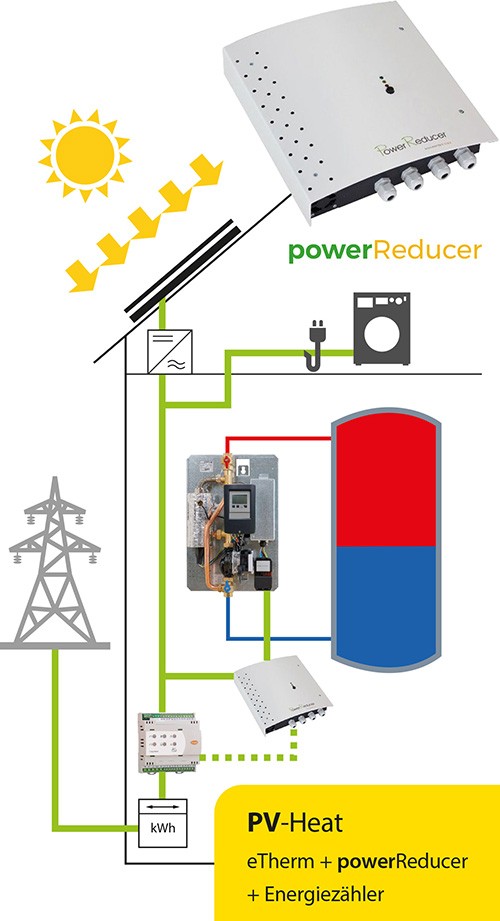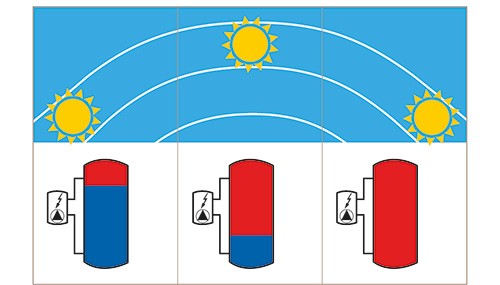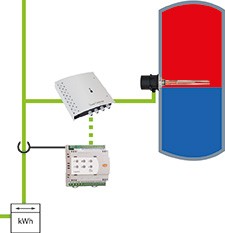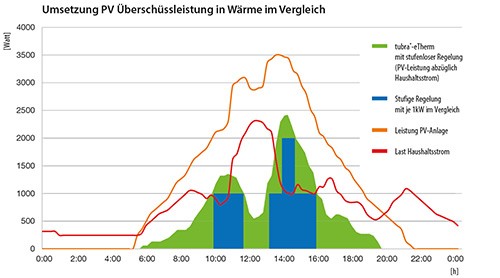Product Special storage

Layered storage loading
10 sun hours

- No conventional reheating necessary
- Memory is charged to 100%
- Result: plus 20% Storage capacity
PV-Heat: Heating rod + powerReducer


Control of the heating elements depending on the power fed into the grid (thus no purchase from the grid – unlike other systems that switch depending on the PV power).
PV-Heat
Store your own electricity optimally & use it for yourself
Use of PV energy and electrothermal heat for
Single and multi-family houses with powerreducer & energy meter
All advantages at a glance
The electrothermal stations convert excess electricity from a photovoltaic system into heat. This is measured and controlled by the powerReducer( energy management system ). The stratified loading of the storage tank ensures optimum storage and use of the energy.
- Energy storage in thermal accumulators with significantly higher Storage capacities than in batteries. Storage capacity: 1000 liters, 20 at 70°C = 58 kWh
- Universal use – can also be retrofitted for post-EEG systems
- Self-consumption share of up to 90% due to priority household electricity and thermal storage/utilization
- Layer loading of Buffer storage with constant loading temperature 70°C
powerReducer- Increase self-consumption
The offered solution allows to measure the power fed into the grid and redirect it to a resistive load with a maximum power of 3 kW, increasing the self-consumption.

Self-consumption kit 3 kW
consisting of a 3-phase energy meter and power electronics for connection to a 1-phase standard 3 kW heating element, such as heating rods or the eTherm C3, optionally available with heating rod.

Product information / Prices
